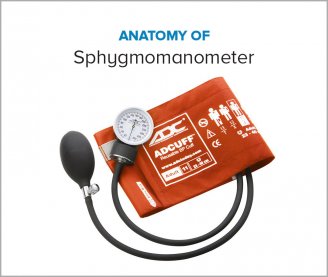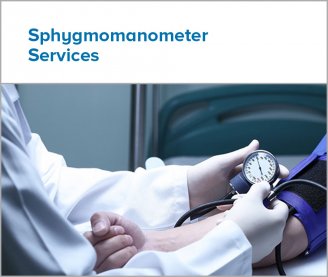- Products
- New Products
- Featured Products
- Color and Print Themes
- Blood Pressure Measurement
- NIBP / Vital Sign Monitors
- Digital Aneroid Sphygmomanometers
- Palm Aneroid Sphygmomanometers
- Pocket Aneroid Sphygmomanometers
- Pro's Combo Sphygmomanometers
- Multicuff Sphygmomanometers
- Clock Aneroid Sphygmomanometers
- Mercury Sphygmomanometers
- Home Blood Pressure Measurement
- Adcuff +
- Gauges
- Bulb & Valves
- Disposable Cuffs
- Reusable Cuffs & Bladders
- Sphygmomanometer Accessories
- Sphygmomanometer Parts
- Caseware
- CPR / Airway
- EENT
- Instruments & Accessories
- Laryngoscopes
- Penlights
- Pulse Oximeters
- Stethoscopes
- Thermometry
- Vital Signs Monitors
- Solutions
- About ADC
- Learning Center
- Support
- Blog
- Contact
History of the Sphygmomanometer
The circulation of blood within the body has been a subject of study for many thousands of years. In ancient times, the Chinese recognized the fact that blood circulated through the blood vessels and developed theories on how such systems worked. Evidence also suggests that scholars in India had developed some knowledge of the circulatory system, with an emphasis on the pulse and its dynamic nature. (1)
A broader understanding of circulation and the circulatory system was developed in the early 1600’s by a doctor named William Harvey. He began teaching about circulation in 1615 and later published his work in 1628 entitled Exercitatio Anatomica de Motu Cordis et Sanguinis in Animalibus (On the Movement of the Heart and Blood in Animals). His work became a foundation for the study of the circulatory system, and is still highly regarded even to this day. (1)
Once the correlation between heart rate and pulse was discovered, it was possible to determine blood volume and blood pressure. In 1733 Reverend Stephen Hales recorded the first blood pressure measurement on a horse. He did this by inserting a long glass tube upright into an artery, observing the increase in pressure as blood was forced up the tube. (2)
In 1881, the first sphygmomanometer was invented by Samuel Siegfried Karl Ritter von Basch. It consisted of a rubber bulb that was filled with water to restrict blood flow in the artery. The bulb was then connected to a mercury column, which would translate the pressure required to completely obscure the pulse into millimeters of mercury. (3)

This image shows a Riva-Rocci sphygmomanometer with cuff used by Korotkoff, who later discovered systolic and diastolic blood pressure.
In 1896, the device was further improved by Scipione Riva-Rocci. Improvements included a cuff that could be affixed around the arm to apply even pressure to the limb that would become the standard design for such devices going forward. (4)
Modern blood pressure measurement was not developed until 1905, when Dr. Nikolai Korotkoff discovered the difference between systolic blood pressure and diastolic blood pressure. These pressures corresponded to the appearance, and disappearance of, sounds within the arteries as pressure was applied and then released. Known as Korotkoff sounds, the use of systolic and diastolic sounds is now standard in blood pressure measurement.
Since that time, further advances have been made to sphygmomanometers. Now available in a variety of styles ranging from mercurial to aneroid and electronic versions, blood pressure measurement has become more accurate and widely accepted as an important vital sign when diagnosing a patient.
References
- 1. William H. McMicken, M.D. (n.d.). Hardening of the Arteries, Inevitable or Preventable? Retrieved from http://familydoc.tripod.com/ascvd1.htm
- 2. (n.d.) The History of Blood Pressure Monitoring. Retrieved from: http://www.healthperfect.co.uk/Index/dphistry.htm
- 3. Georgia Alton. (n.d.) The History of Sphygmomanometers. Retrieved from: http://www.ehow.com/about_5339926_history-sphygmomanometers.html
- 4. Sphygmomanometer. (8 January 2013 at 15:32). Retrieved from Wikipedia: http://en.wikipedia.org/wiki/Sphygmomanometer




